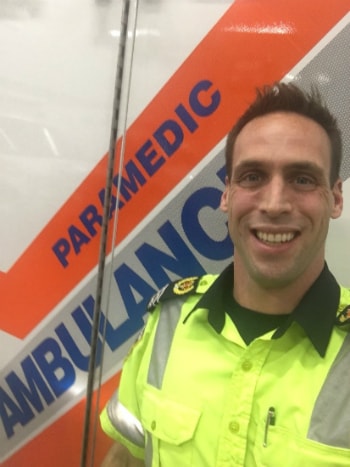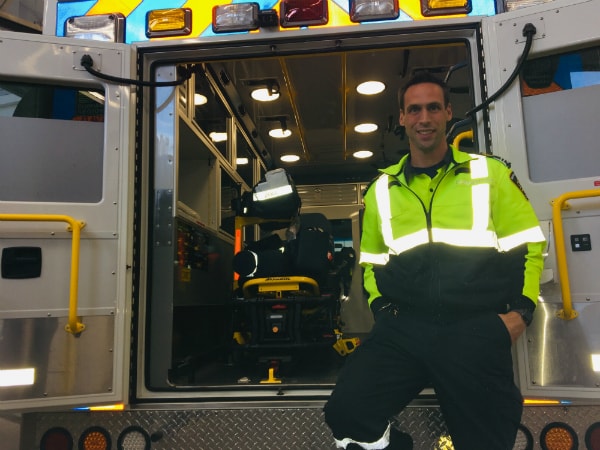By Mike van Mil, Canadian Red Cross digital volunteer
What would you say if I told you that you had the power to save a life in your community? Would you believe me? Saving a life is easier than you might think. November is
CPR month and as a Paramedic I can’t stress enough how important bystander CPR is in the chain of survival when a persons’ heart stops. Of all the cardiac arrest that I have seen, or heard of through colleagues, that resulted in the person having their heart successfully restarted have all had some element of bystander CPR prior to paramedics or a defibrillator arriving.

Let me tell you the story of Mary. Mary’s husband was upstairs having a shower when she heard a loud thud. She ran upstairs to find her husband laying on the floor unconscious and not responding. Mary immediately ran next door for help. Her neighbour immediately came to their house and was able to recognize that Mary’s husband did not have a pulse and began CPR. When my partner and I arrived at the house the neighbour was still performing
CPR. We relieved him, administered 3 defibrillations and life-saving medications and began to transport him to the hospital. On route to the hospital we continued CPR and a breathing tube was inserted. Just as we arrived at the hospital his heart began to beat on its own again! Mary’s neighbour played an integral role in the survival of her husband.
This is just one success story of many that happen throughout Canada every day! These success stories could not be possible without people like you learning CPR and utilizing this life saving skill. Yes, it can be quite daunting and scary but someone could have a second chance at life all because you took the time to learn CPR. The thought can be quite overwhelming.
Once you take a course and learn CPR you will see that it is in fact quite easy. If you are uncomfortable with the mouth-to-mouth breathing part of CPR then “
hands only” CPR is an interim alternative. “Hands only” or compressions only CPR has been shown to be effective because blood, most importantly of all, needs to keep circulating in the event the heart stops. CPR is a good way to reduce the likelihood of blood coagulating and to keep blood circulating when the heart is unable to do it.

Learning CPR will only take
four hours of your time! This is the time it takes to complete a traditional in-classroom CPR A training for adult victims only. CPR is also taught as part of standard first aid training. You can find and sign up for a Canadian Red Cross
first aid course in your area. In the meantime, while you are waiting for your course to start why not download the Canadian Red Cross’ first aid
app and get a head start on your training. Be ready.